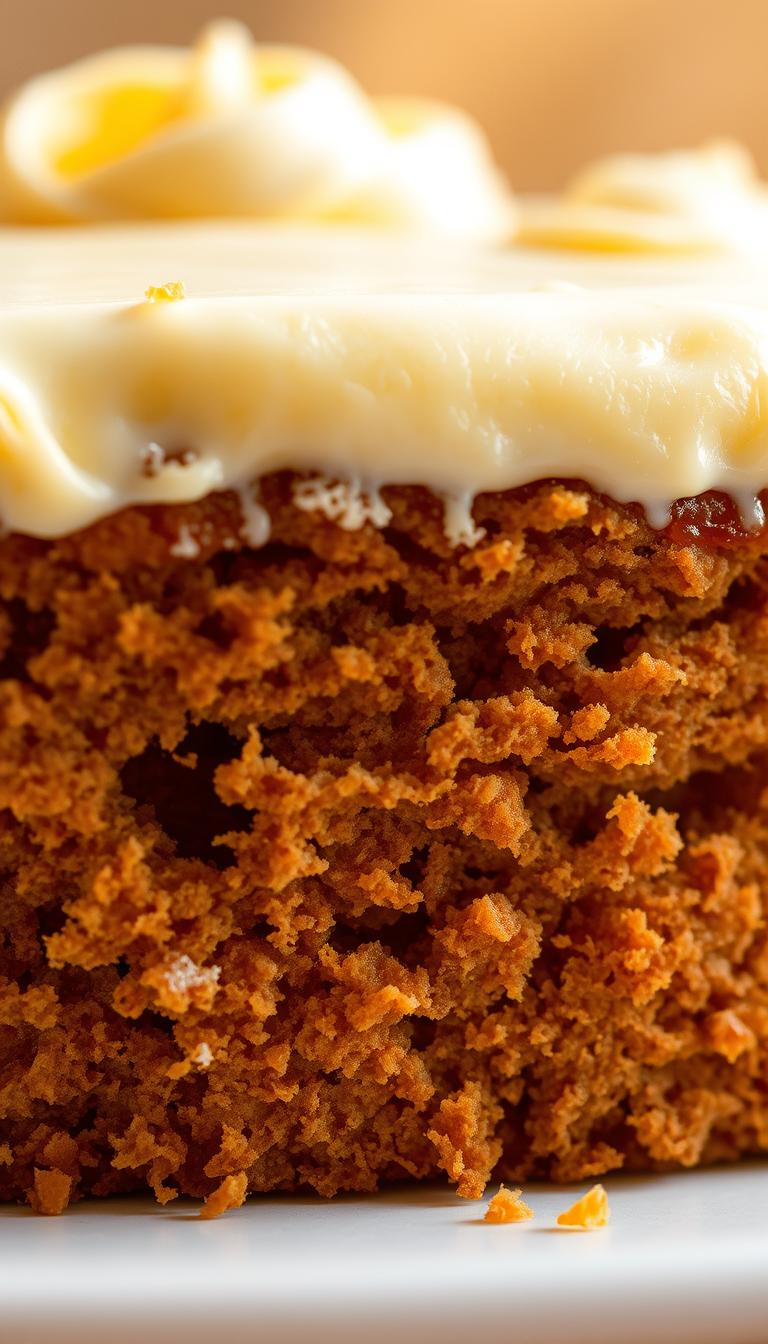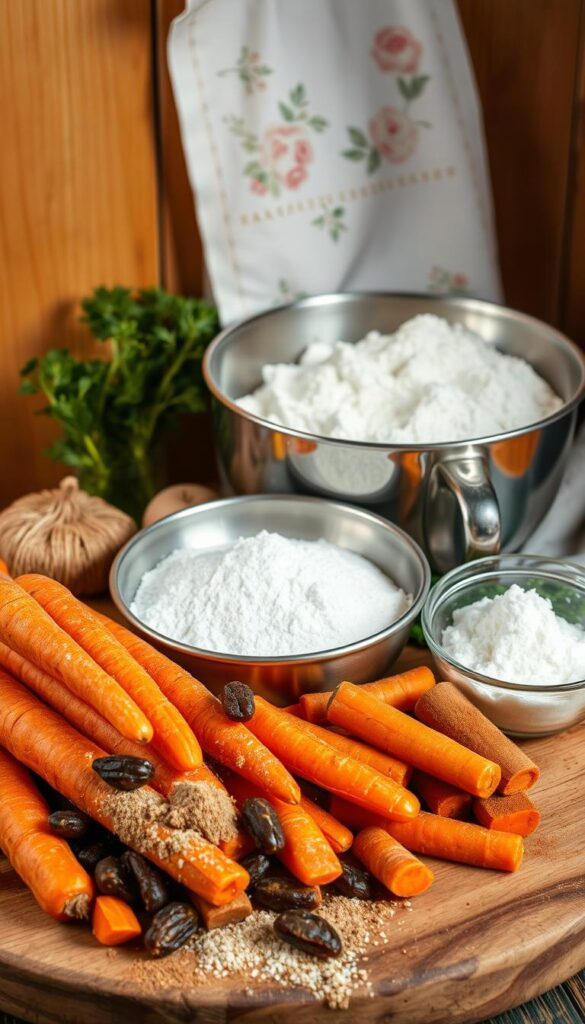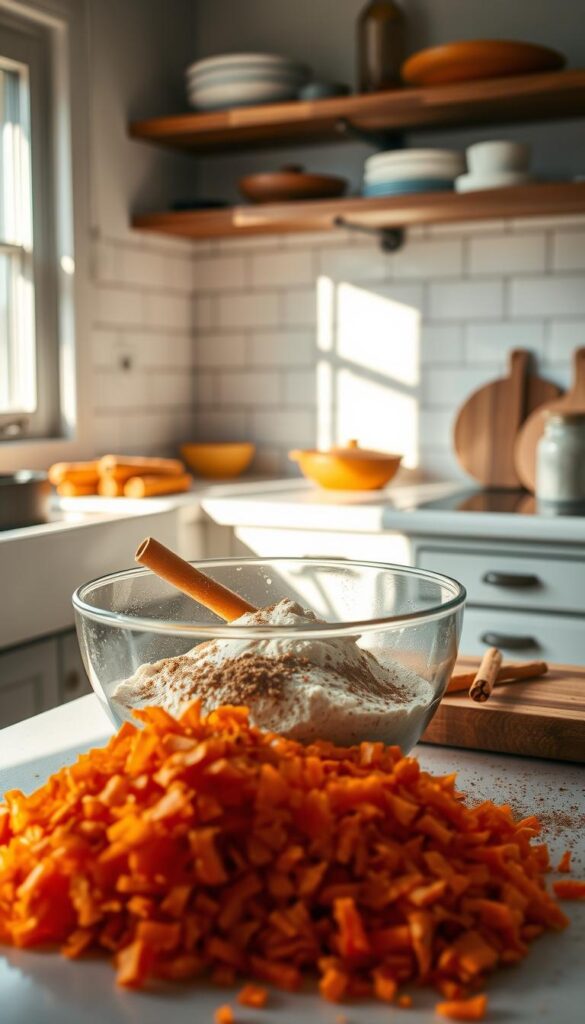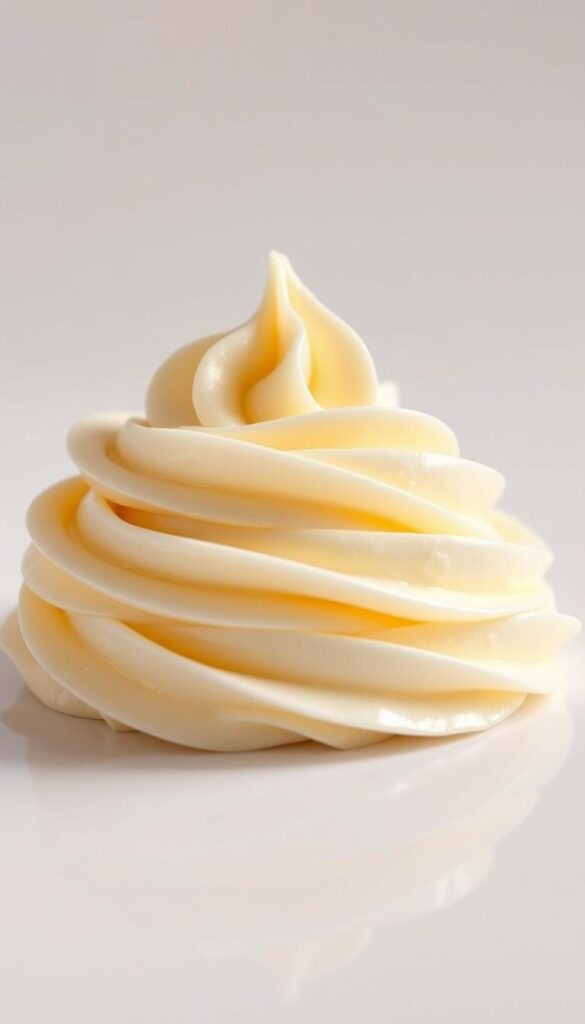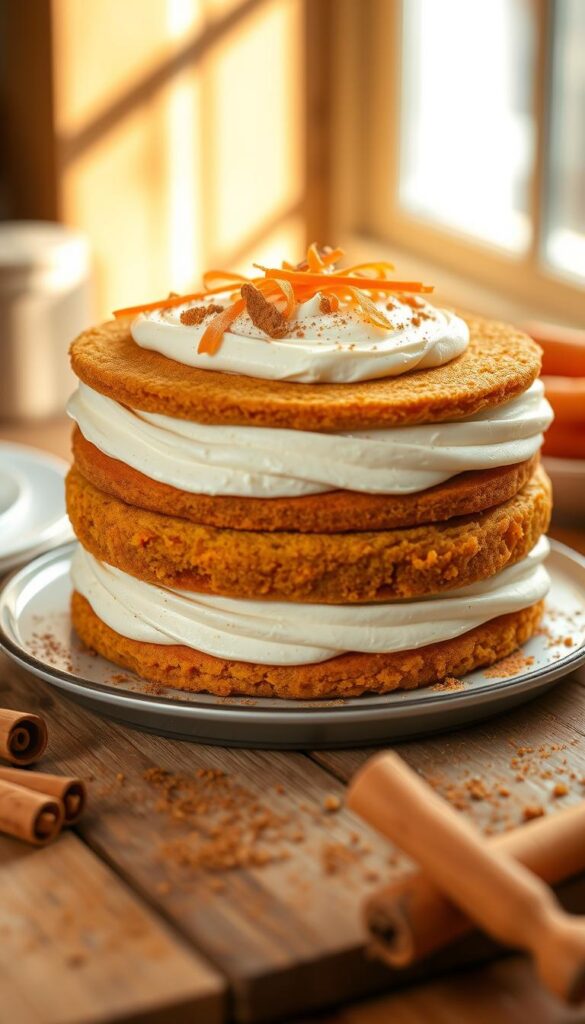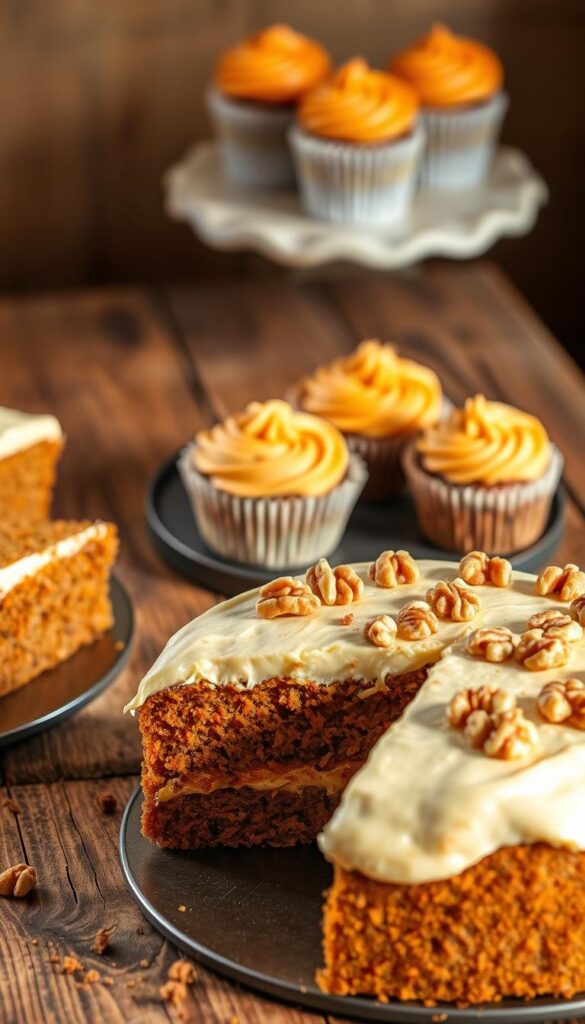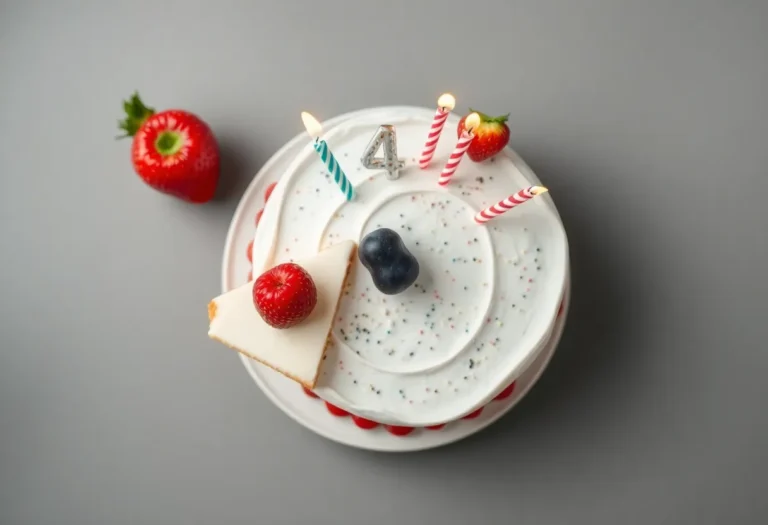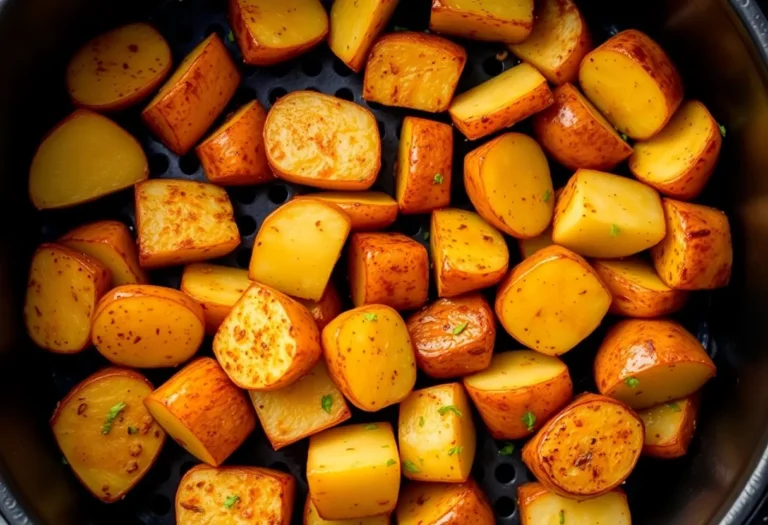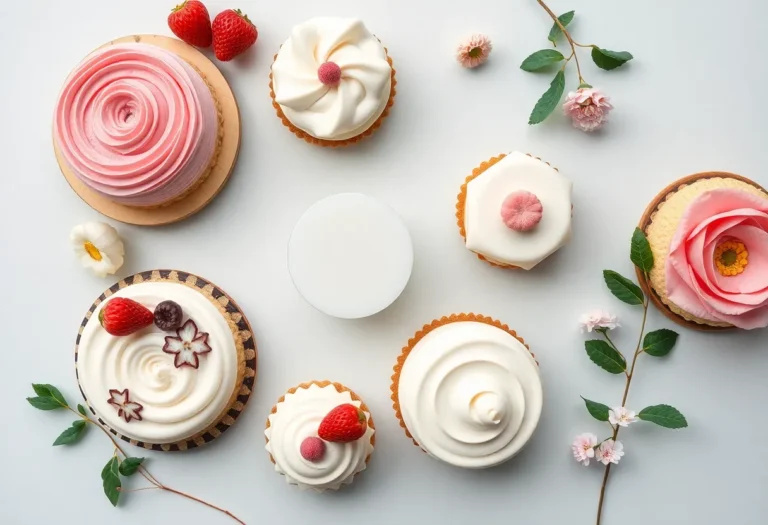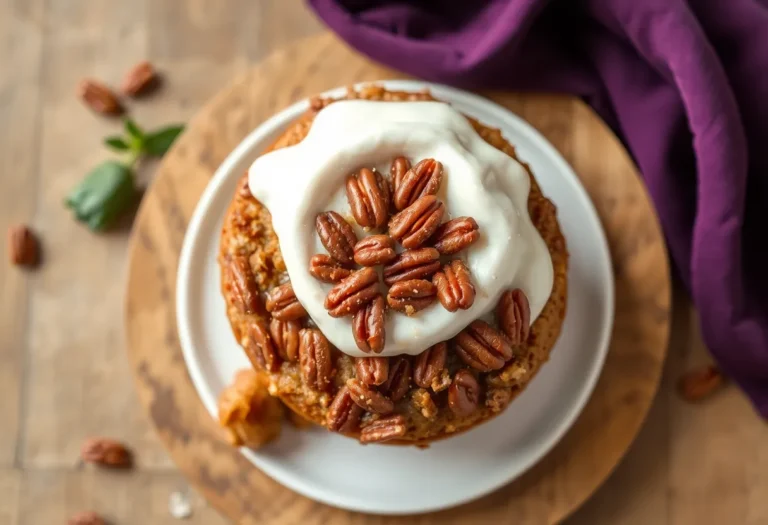Irresistible Carrot Cake: The Ultimate Recipe
Can a dessert be both comforting and sophisticated at the same time? Imagine a cake that’s not only moist and flavorful but also visually appealing, making it perfect for any occasion.
combines the warmth of spices with the sweetness of freshly grated carrots, all wrapped up in a velvety cream cheese frosting.
This isn’t just any cake; it’s a masterclass in texture and flavor, with a tender crumb and a rich, creamy frosting that will leave you wanting more. The secret lies in the simplicity of its ingredients and the precision of its preparation, making it a standout dessert for both everyday indulgence and special occasions.
What Makes This the Best Carrot Cake Recipe
After countless attempts, we’ve finally cracked the code to making the best carrot cake recipe that’s both moist and flavorful. This recipe stands out from the rest due to its perfect balance of moisture and flavor, making it a dessert that people can’t get enough of.
A Perfect Balance of Moisture and Flavor
The key to this carrot cake’s exceptional texture lies in the ideal ratio of wet to dry ingredients, resulting in a cake that’s moist without being dense or soggy. Using oil instead of butter contributes significantly to the cake’s moisture retention and tender crumb structure.
The Secret Ingredients That Make a Difference
The natural sweetness of carrots pairs perfectly with the warm notes of cinnamon and other spices, creating a beautifully balanced flavor profile. The secret ingredients, including the perfect amount of spices, elevate this carrot cake recipe from good to extraordinary.
By understanding how the baking process affects the final texture and taste of your carrot cake, you can achieve consistent results. With these tips, you’ll be well on your way to making the best carrot cake recipe that’s sure to impress.
Essential Ingredients for an Amazing Carrot Cake
Crafting the perfect carrot cake begins with understanding the essential ingredients that make it truly amazing. The right combination of ingredients is what sets a great carrot cake apart from a good one.
The Dry Ingredients: Flour, Leavening Agents, and Spices
The dry ingredients form the backbone of your carrot cake, providing structure and flavor. All-purpose flour is the preferred choice, though you can substitute it with spelt or a gluten-free blend for dietary needs. Baking soda is crucial for the cake’s rise; ensure it’s fresh for the best results. A pinch of salt and a sprinkle of cinnamon add depth to the cake’s flavor.
The Wet Ingredients: Oil, Eggs, and Sweeteners
The wet ingredients are what make the carrot cake moist and delicious. Using oil instead of butter keeps the cake tender, while eggs add richness and structure. A combination of white and brown sugar provides the perfect balance of sweetness and moisture.
The Star Players: Carrots, Nuts, and Mix-ins
The star of the show is undoubtedly the carrots, which should be freshly grated to ensure the right moisture content. You’ll need about three cups of them. Adding nuts or other mix-ins like raisins or pineapple can enhance the flavor and texture, making the cake even more delightful.
By understanding the role of each ingredient, you can create a carrot cake that’s not only delicious but also tailored to your preferences.
Step-by-Step Carrot Cake Preparation
To create an irresistible carrot cake, follow these straightforward steps. The process involves preparing your pans and oven, mixing the batter properly, understanding baking times and temperature guidelines, and knowing when your cake is done.
Preparing Your Pans and Oven
Before you start mixing your ingredients, it’s crucial to prepare your cake pans and oven. Grease two cake pans with cooking spray and line the bottoms with parchment paper to ensure your cakes release easily after baking. Preheat your oven to 350°F to get it ready for the cake batter.
Mixing the Batter Properly
Mixing the batter is a straightforward process. Start by whisking together the dry ingredients, including flour, baking soda, and sugar, in one bowl. In another bowl, combine the wet ingredients. Then, fold the dry ingredients into the wet ingredients until just combined. Add grated carrots, nuts, and raisins to the batter and mix until they are evenly distributed. This method ensures your cake batter is smooth and consistent.
Baking Times and Temperature Guidelines
Divide the batter evenly between the prepared pans and bake in a preheated oven at 350°F. The baking time will depend on the size of your pans, typically ranging from 25 to 40 minutes. Keep an eye on your cakes as they bake.
| Pan Size | Baking Time |
|---|---|
| 8-inch round pan | 30-35 minutes |
| 9-inch round pan | 25-30 minutes |
How to Know When Your Cake Is Done
To check if your carrot cake is done, use the toothpick test or gently touch the top. If a toothpick inserted into the center comes out clean, the cake is ready. Alternatively, if the cake springs back when lightly touched, it’s done. If not, give it a few more minutes and check again.
Creating the Perfect Cream Cheese Frosting
Achieving the perfect cream cheese frosting requires a blend of quality ingredients and precise techniques. The right balance of flavors and textures can elevate your carrot cake to a whole new level.
Classic Cream Cheese Frosting Ingredients
For a classic cream cheese frosting, you’ll need a few essential ingredients. Start with 16 ounces of cream cheese and 1/2 cup of softened butter, beaten together until smooth. Then, add 4½ cups of powdered sugar, 1¼ teaspoons of vanilla extract, and a pinch of salt. Beat the mixture for 2 to 3 minutes until it becomes extra creamy. Alternatively, for a lighter frosting, you can use cream cheese, powdered sugar, cornstarch, and heavy cream, beating the cream cheese with sugar and cornstarch until fluffy, then incorporating the cream.
Whipping Up a Light and Fluffy Texture
To achieve a light and fluffy texture, it’s crucial to beat the cream cheese and butter until they’re well combined and smooth. The addition of powdered sugar should be done gradually, ensuring that it’s fully incorporated before adding more. Beating the mixture for an adequate amount of time is key to incorporating air and achieving the desired consistency. Using room temperature ingredients also plays a significant role in obtaining a smooth, lump-free frosting.
Frosting Application Techniques
Once your frosting is ready, applying it to your carrot cake can be a straightforward process. Start by placing a layer of cake on a serving plate, then spread a generous amount of frosting on top. If you’re layering cakes, repeat the process, finishing with a layer of frosting on top. To create smooth sides, use an offset spatula to spread the frosting evenly. For decorative swirls, use a piping bag or a spoon to create the desired patterns.
Assembling and Decorating Your Carrot Cake
With your cake layers baked to perfection, it’s time to bring your carrot cake to life through careful assembly and decoration. This process involves more than just stacking the layers; it’s about creating a visually appealing dessert that’s sure to impress.
Layering Your Cake
To assemble your carrot cake, start by placing one layer of the cake, right-side up, on a cardboard round or a cake plate. If you’ve added coconut to the frosting, use half of it to generously cover the first layer. Use an offset spatula or a spoon to smooth the frosting all the way to the edges of the layer. Top with the second layer, this time placing the cake top-side down. Frost with the remainder of the coconut frosting. Finally, top with the last layer, right-side up, and use the plain frosting to cover the top—and the sides, if desired.
Decorative Finishing Touches
To give your carrot cake a professional finish, consider adding decorative elements. You can use chopped nuts, toasted coconut, or piped frosting designs to elevate your cake’s appearance. These finishing touches not only add texture but also make your cake visually appealing.
- Chopped nuts for added crunch
- Toasted coconut for a tropical flavor
- Piped frosting designs for a personalized touch
Presentation Ideas for Special Occasions
For special occasions, consider garnishing your cake with candied carrots or edible flowers to add a pop of color and creativity. You can also experiment with different frosting techniques or cake stands to make your carrot cake stand out.
By following these steps and tips, you’ll be able to create a beautifully assembled and decorated carrot cake that’s sure to impress your guests.
Variations and Customizations for Your Best Carrot Cake Recipe
Discover the versatility of carrot cake with these innovative variations and dietary adjustments. Whether you’re catering to different tastes or dietary needs, these tweaks can elevate your carrot cake to new heights.
Gluten-Free and Dietary Adaptations
For those with gluten intolerance or sensitivity, this recipe can be adapted using spelt flour or your favorite gluten-free flour blend, ensuring the cake remains moist and delicious. Additionally, you can explore reducing the fat content by substituting certain ingredients or using less sugar without compromising on flavor.
Adding Pineapple, Coconut, or Other Flavors
Introducing crushed pineapple can add moisture and a hint of tropical flavor to your carrot cake. You can use fresh chopped pineapple or drained canned pineapple, but be sure not to add more than 1 cup. Other flavors like coconut, orange zest, or different spice blends can also be incorporated to give your cake a unique twist.
Cupcake and Sheet Cake Alternatives
To make carrot cake cupcakes, simply fill muffin pans lined with cupcake liners about 3/4 of the way with batter and bake at 350°F (180°C) for 18-25 minutes. For a large single-layer cake, use a 9×13-inch rectangular pan and adjust the baking time as needed. A 10-cup or 12-cup bundt pan is another option, though expect the bake time to increase by about 30%.
Storage Tips and Make-Ahead Instructions
Proper storage and preparation in advance are key to enjoying your carrot cake at its best. To start, it’s crucial to cool your cake layers completely before frosting to prevent the frosting from sliding off. Cooling them in the pans for 15 minutes before transferring to a cooling rack achieves this.
For storage, your covered cake can be kept at room temperature for 2 to 3 days. Alternatively, it can be frozen, first uncovered until firm, then wrapped airtight and stored in the freezer for up to 2 months. When you’re ready to serve, defrost the cake, still wrapped, in the refrigerator overnight.
Components of your cake can also be made ahead. The frosting can be stored in the fridge for 3-4 weeks or frozen for up to 3 months. Simply remove it from the fridge 1-2 hours before use to bring it to room temperature.

